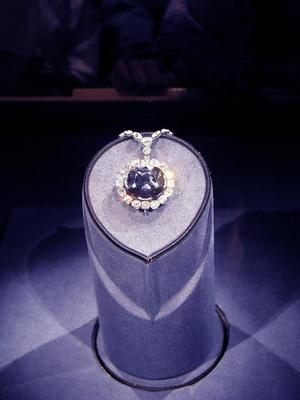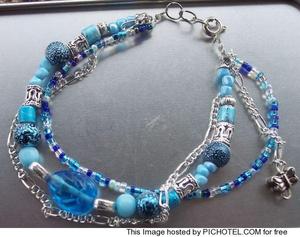The most difficult item to see at Washington’s Smithsonian’s Museum of National History is the Hope Diamond. It’s not that it is physically guarded, although a multitude of high tech security protects the world’s largest diamond in a glass case. It’s difficult to see the Hope Diamond because it is always surrounded by throngs of curious viewers.
According to Smithsonian’s Museum of National History, the Hope Diamond is one of the most popular items at the Museum of National History. It is a much visited and world renowned diamond not only for its beauty, but for a purported curse attached to the diamond.
The sparkling violet diamond originally weighed 112 3/16 carats, when it was discovered and purchased by French adventurer Jean Baptiste Tavernier in India. The legend is much different from Smithsonian’s version of the Hope Diamond’s history. According to legend the curse of the diamond was set in motion when Tavernier stole the diamond from a statue of the Hindu goddess Sita. In retribution for his crime, Travernier was ripped to shreds by wild dogs on a trip to Russia when he was 84.
In defense of Tavernier and the Hope Diamond historians and gemologist agree that the original crudely cut shape of the diamond was not consistent with those found in the eye or forehead of Hindu idols.
Tavernier sold the Hope Diamond to King Louis XIV of France with a number of other jewels. King Louis XIV had the diamond cut by his court jeweler 67 1/8 carat. At the time the diamond was set in gold and called the “Blue Diamond of the Crown, “or the “French Blue.” King Louis XIV often wore the diamond on a necklace at public events. There are no stories about the curse attached to King Louis XIV’s ownership and wearing of the diamond.
Eventually the Hope Diamond was stolen when Louis XVI and Maria Antoinette fled France. Some associate their beheading with the curse of the diamond. It is more likely, however, that their beheading was a result of the French Revolution and extravagant lifestyle.
It is reported by Smithsonian that King George IV of England possessed the diamond at some time. When King George died the brilliant blue-gray diamond was sold to cover his extensive debts. Could his debts have been a result of the curse of the Hope Diamond?
The next place the Hope Diamond surfaced was in the collection of a gem collector, Henry Philip Hope. It is from Hope that the Diamond acquired its name. Henry Philip Hope died and the diamond passed to his nephew Henry Thomas Hope. From Henry Thomas Hope it passed to Lord Francis Hope. The Hope family hit bankruptcy and sold the diamond to pay their debts. Those who believe the curse of the Hope Diamond point to the Hope family’s loss of fortune as a result of the curse.
Joseph Frankels and Sons of New York purchased the diamond, but cash strapped, they sold the Hope Diamond. It passed through several owners until it ended up in the hands of Pierre Cartier. Cartier set out to sell the diamond to Evalyn Walsh McLean, an eccentric resident of Washington, D.C.
Evalyn believed that cursed objects would become good luck charms in her possession. Cartier played on the curse of the Hope Diamond to encourage McLean to purchase it. Some historians believe Cartier may have even created the stories to sell the diamond to McLean. The legends and stories surrounding the diamond didn’t seem to surface until the 20th century about the time the diamond was sold to McLean.
Evalyn Walsh McLean wore the Hope diamond and a variety of other expensive, exotic gyms all the time. One rumor reports that McLean’s doctor had to beg her to remove the diamond, which had been set in a necklace before performing goiter surgery.
Adding fuel to the legendary curse, Mrs. McLeans nine year old son died in a car accident, her 25 year-old daughter committed suicide, and her husband was committed to a mental hospital for life. Not only was McLean’s life in personal disarray, but her debts mounted against her, as well.
Evalyn Walsh McLean sold the diamond to Harry Winston, a New York jeweler. Believers in the curse of the Hope Diamond say that Winston donated the diamond to the U.S. to be rid of the curse. Harry Winston, however, stated publicly that he donated the Hope Diamond to begin the fulfillment of his dream of a national gem and mineral connection.
The Hope diamond is now displayed on a diamond necklace at the Smithsonian Museum of Natural History.
Sources:
Stratos, Anita, “Sparkling Tales, Deadly Gems.” Suite101.com
“The Hope Diamond,”Encyclopedia Smithsonian.





